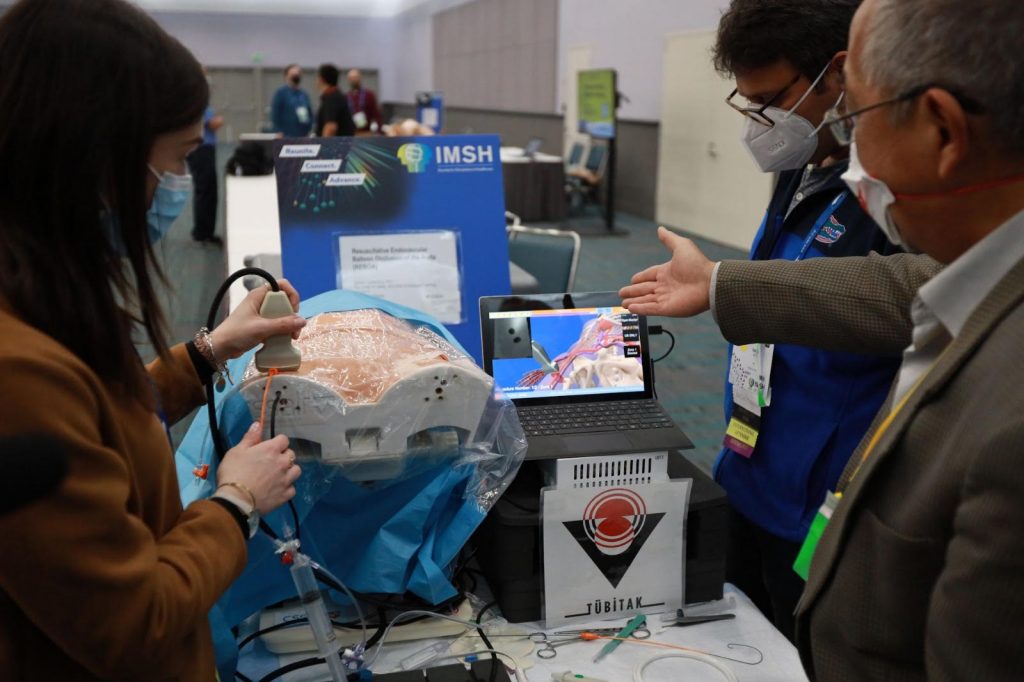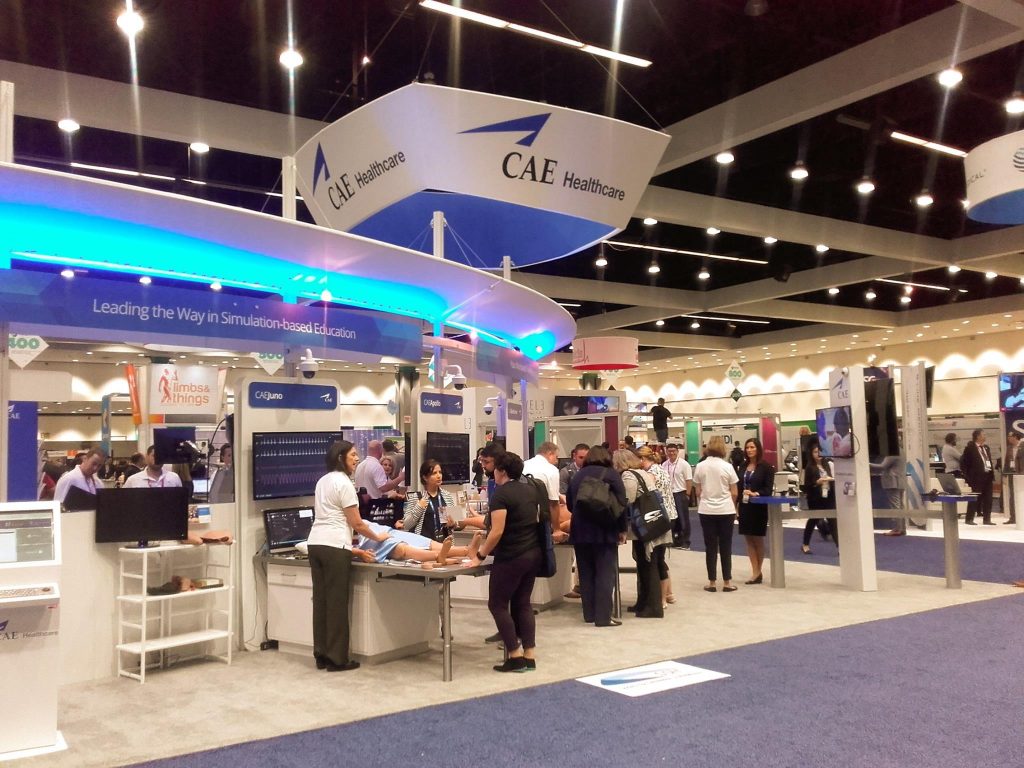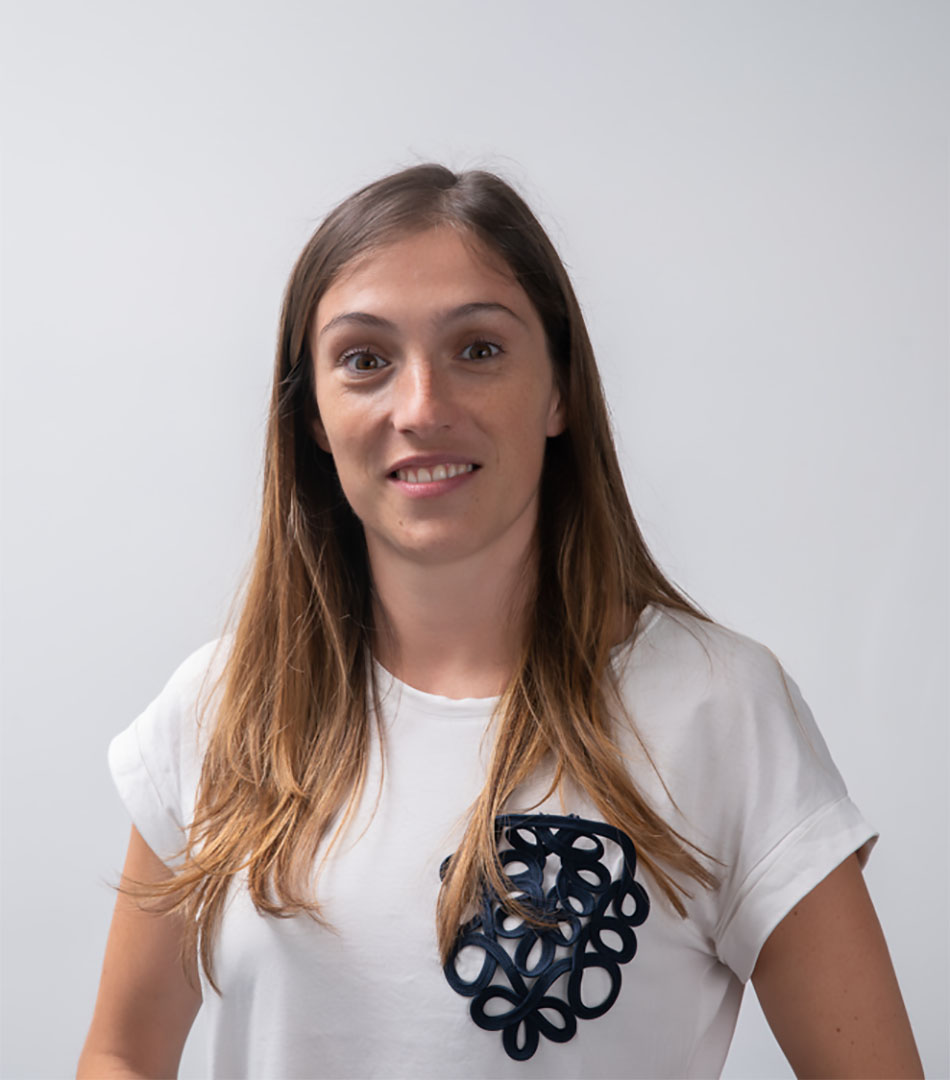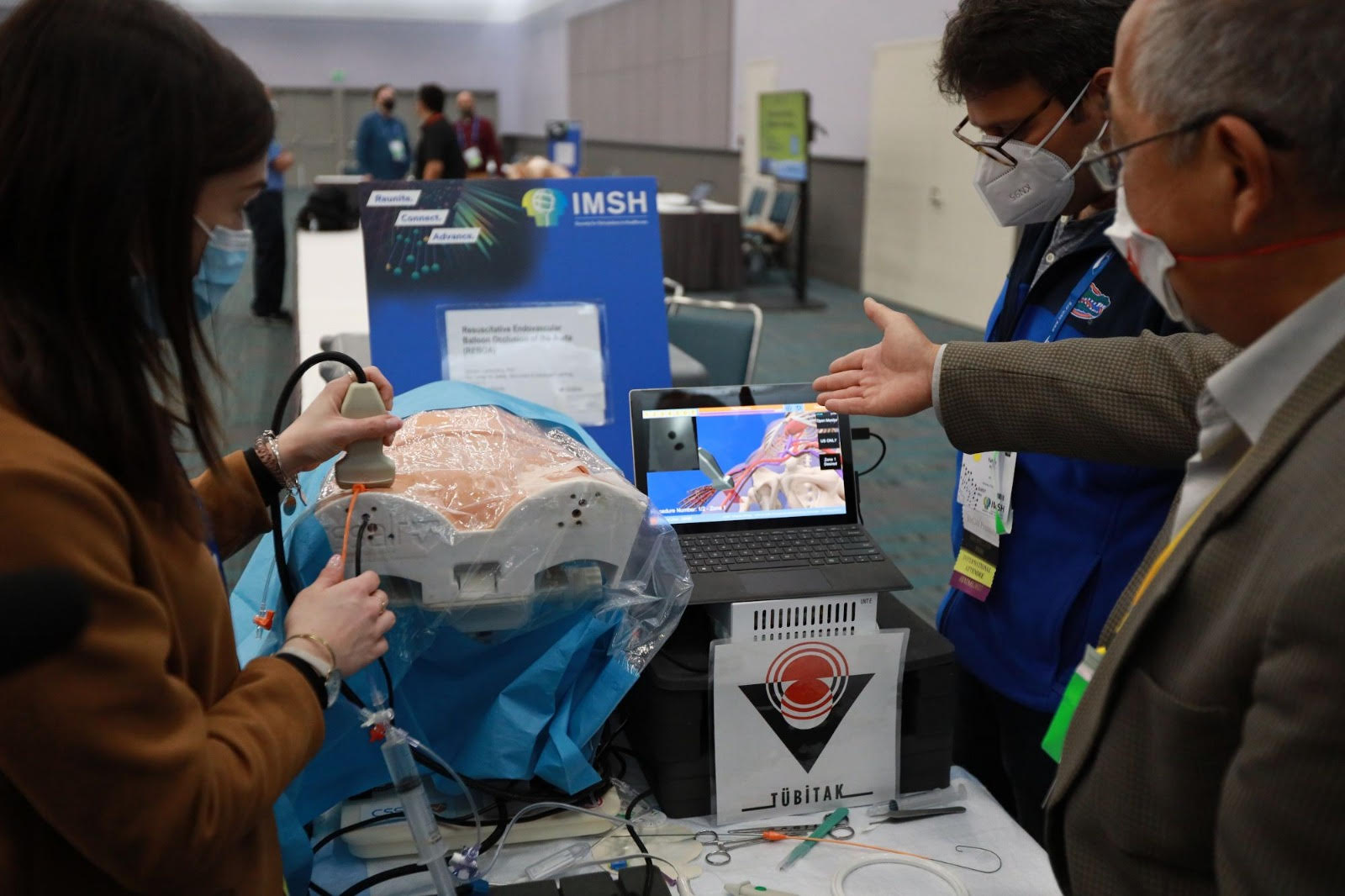The American simulation congress IMSH 2022 seen through the eyes of a technician
Suitcase ready. Passport taken. Let’s go. Destination Los Angeles, California, to participate in the most important event of the year in the world of simulation: the International Meeting for Simulation in Healthcare.
Day 1 – Sunday January 16
My day begins with the Connections Program, a gathering designed for first-time IMSH attendees. Here, expert participants guide their colleagues in choosing the activities to participate in. During this meeting I understand the differences between the proposed formats: seminars, presentations, interactive activities and demonstrations; then I begin to plan my visit, which begins with the presentation of two research projects carried out at SimAv in Genoa. I confess that I am delighted to finally be able to share our activities in person with professionals from all over the world.
Day 2 – Monday, January 17

The day begins with the plenary session where Dr. Erica Dhawan, author of the book “Digital Body Language” talks about teamwork and digital interactions. After the plenary session it is my turn as moderator: here I have the possibility to be part of interesting debates. Finally, I peek a little among the new inventions and my attention is drawn to the REBOA ultrasound training, a simulator prototype for the treatment of non-compressible internal hemorrhages, presented by Dr. Lampotang, medical-engineer director of the Simulation Center, Security and Advanced Learning Technology at the University of Florida, and his team.
Day 3 – Tuesday, January 18
After the plenary session, in which media presenter Yassmin Abdel-Magied talks about bias, diversity, equality and inclusion, I follow a workshop by Dr. Phill Wortham, director of the Center for Advanced Medical Learning and Simulation, Tampa, Florida , who explains in an entertaining way how to use social networks in the world of simulation. In the afternoon I follow a summary of the most relevant articles of 2021 and listen to interventions on the use of virtual and augmented reality in simulation. The presentations are interesting, although they all have the sole point of view of the instructor, typically a health professional, with no special digital knowledge.
Day 4 – Wednesday, January 19
Today the day is dedicated to the exhibition area. As an engineer, I am interested in knowing what technological solutions are currently on the market. Alongside giants like 3B Scientific, Gaumard and Laerdal, I find there are a lot of small companies. Among these, I was particularly struck by: Dr. Hologram proposing a life-size patient hologram; PCS that for some years has been trying to use artificial intelligence to create virtual patients and manikins capable of interacting naturally with the student; Reynolds Advanced Materials specializes in materials at the limit of the imaginable; Lifecast Body Simulation, an English company that creates terrifyingly realistic manikins (I confess I thought of reborn dolls); Fundamental Surgery, which presents a simulator consisting of a Virtual Reality application to which HaptX gloves have been integrated that provide haptic feedback (still inaccurate) during orthopedic surgery.

Final remarks:
One thing I particularly appreciated about IMSH was the multidisciplinary nature of the interventions, each of which led me to think about simulation from a different perspective.
If I had to summarize my experience, I would certainly use the term Virtual Reality. In fact, there are countless applications, both commercial and research, that use this technology. Many simulation centers are developing, in collaboration with engineers and programmers, products designed specifically for their needs. However, this division of effort leads to a large number of unvalidated products with questionable levels of realism and immersion. In this sense, it would be necessary to join forces and begin to develop standardized and validated products.
Four days have flown by and I return home full of ideas, after an experience that I recommend, at least once in a lifetime, to all “simulationists”, as Americans like to call themselves.































